In addition to headlamps that light the road ahead of you when you drive at night, lights play a crucial role in ensuring a safe environment in cloudy, rainy, snowy, or foggy weather, as well as at dusk and at night by actively letting pedestrians and other drivers around you know where your vehicle is and its direction of travel.
2. Construction
Light bulbs have the following construction (incandescent bulbs)
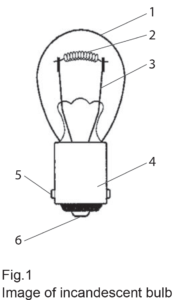
1. Glass sphere
Soft glass is used.
2. Filament
This is a wire that has been wound into a coil, and primarily consists of tungsten.
3. Lead
This is also called the lead wire, and is made of nickel or dumet wire.
4. Metal base
Typically made of metal, but also made of plastic in some cases.
5. Pin
This pin keeps an inserted bulb from popping out of the socket.
6. Contact
This is the positive (+) electrical contact with the socket. The negative (-) contact is the metal portion of the metal base.
3. Types of bulbs
1) Three types of light bulbs are used in automobiles: incandescent bulbs, halogen bulbs, and HID bulbs.
Name
Incandescent bulbs
Image
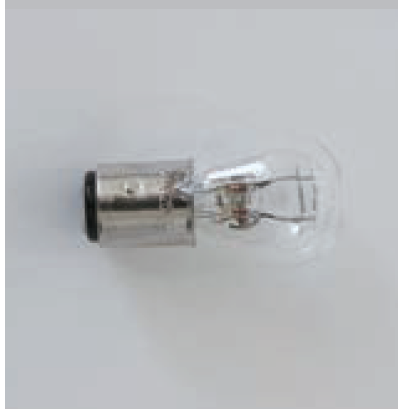
Characteristics
These bulbs are used in a variety of lamps including tail lights, and blinkers.
Name
Halogen bulbs
Image
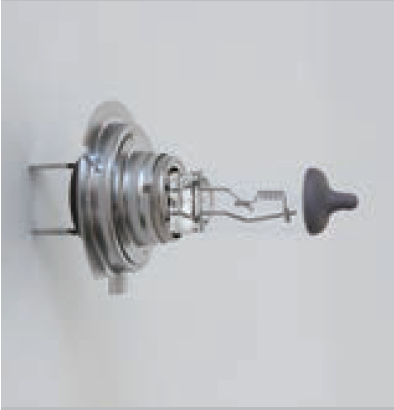
Characteristics
These bulbs are used in headlights and fog lamps. They are filled with halogen gas, and produce a brighter light than incandescent bulbs.
Name
HID bulbs
Image
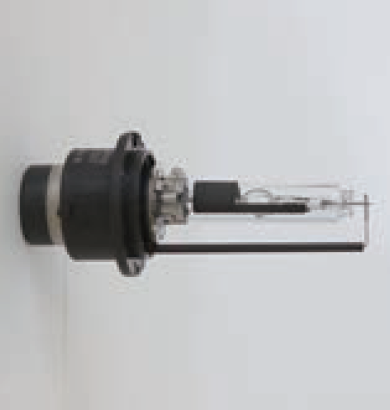
Characteristics
This type of bulb is used in headlights, and produces light from sparks (electric discharges) that are discharged between electrodes inside the bulb. These bulbs are brighter, last longer, and consume less power than halogen bulbs.
2) HID bulbs come in two types: D2S and D2R
Name
D2R
Socket, appearance
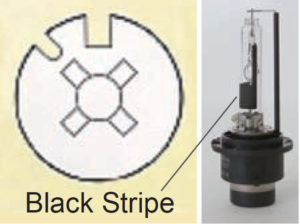
Characteristics
These bulbs are exclusively for lamps with reflectors. These bulbs come with black stripes to prevent light dispersion.
Applications
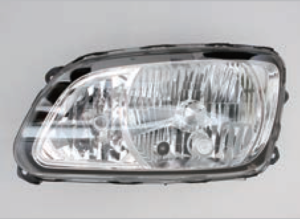
Name
D2S
Socket, appearance
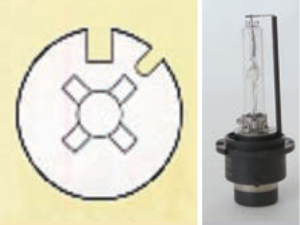
Characteristics
These bulbs are exclusively for projector lamps.
Applications

4. The importance of maintenance, and replacement timing
1) The importance of maintenance
- You will not be able to operate at night if your headlight goes out. (See Image 1)
- Non-functioning brake lights and turn lamps can lead to serious accidents. (See Image 2)
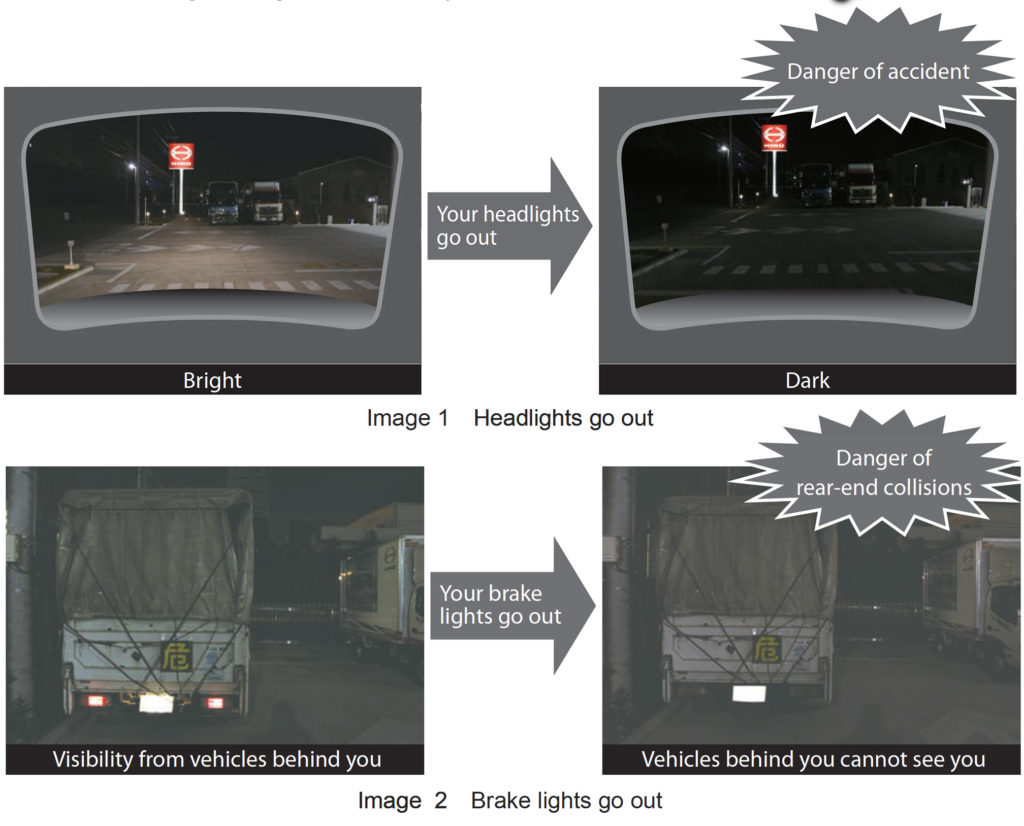
2) Replacement timing … Daily inspections and early replacements
The life cycle of light bulbs can vary widely depending on how frequently they are used and operating conditions. As such, it is important that you inspect these on a daily basis. Towards the end of their life cycle, the glass lens will become darkened, reducing the bulb’s brightness. If your light starts to get darker, it is time to replace your bulb.
3) Points to keep in mind when replacing light bulbs
- Always use bulbs with the prescribed specifications. Check the bulb’s nominal voltage and wattage labeling, and replace it with a genuine bulb with the prescribed specifications. Using light bulbs with the wrong specifications can lead to diminished performance, shorter light bulb life cycle, blown fuses from current surges, and the lens melting from excessive heat.
- Replace both at the same time. Where the lamps come in pairs, such as the headlights and tail lights, if one of the bulbs dies, the other one will also be near the end of its life cycle, so both should be replaced at the same time.
